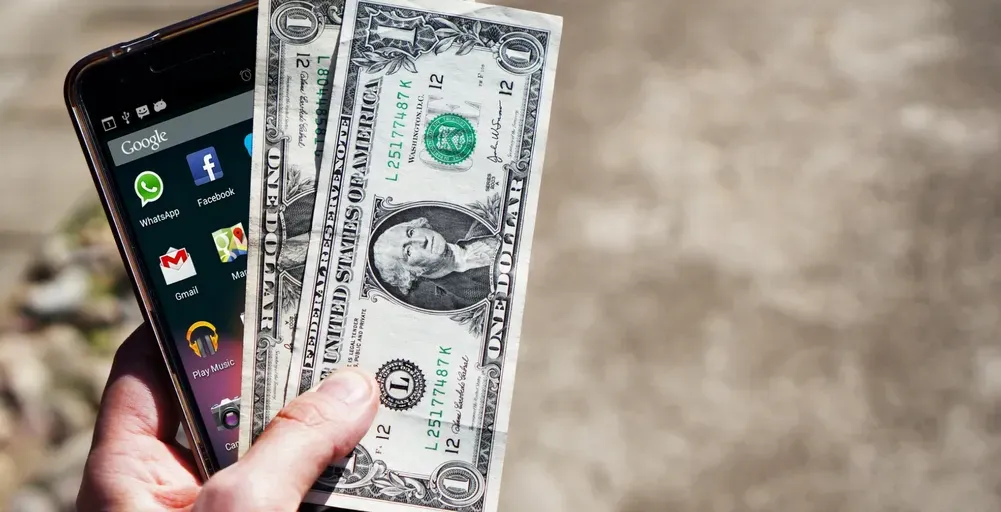
Kamil Sabatowski
29 March 2018, 4 min read

What's inside
- Transaction fee or in-app purchases
- In-app adverts/web adverts
- Monthly subscription
- Selling a license for a digital product
- Creating a digital product on behalf of a client
You put so much effort into developing your digital product, so it's only natural that you want it to bring you a good return on investment. Product monetization is the method you choose for your app to make money. You need to decide how your product will make money right from the start. Note that it's possible to make money off a product like a website or an app in many different ways.
In this article, we cover the most popular methods our partners used to monetize their products. Bear in mind that each monetization scheme has a significant impact on the product development process, but also on the promotion of the app and customer service.
Here are 5 most popular monetization models for digital products to help you pick the right one for your project.
Transaction fee or in-app purchases
One of the most straightforward ways your app can bring you profit is if you decide to charge users for downloading and using it.
Research shows that the users of iOS spend more on apps than Android users. If iOS users make up a large chunk of your target audience, publishing your app as paid can be a smart move. However, remember that on Google App Store you can publish your app as paid and then change it to free, but not the other way round.
Gartner recently revealed that people prefer to spend money on in-app purchases more than paying upfront for the app in the store. In-app purchases basically unlock extra features the users of your app may want. This approach has many advantages because it leaves the core product free for users and offers them deeper engagement by purchasing extra features as they continue using the app.
In-app adverts/web adverts
Another common type of monetization is to support your digital product with ads. You can see products like that all over the place. Note that many apps also offer loyalty programs where users gather points through different actions and can redeem them for rewards.
Just like in-app purchases, in-app ads are a great pick. But remember that the users of digital products usually hate banner ads, so their placement, size, and type are essential to make sure that your product is making money while keeping the user experience great.
Choose ads that are relevant to your target market and promote quality products to save user engagement and retention.
Monthly subscription
The subscription model is common for many types of digital products such as Software-as-a-Service, games, and mobile apps.
To make it work, your product will need to include some kinds of a paywall.
You can present users with a paywall immediately, or later on – for example, after a specific free trial period. You can also set a metered paywall – it will appear after a given number of page or content views. Depending on how many features a user requests, you can offer different subscription plans.
Did you know that 63% of newspapers use a metered paywall? That way they get to generate more revenue from ads instead of simply shutting visitors out. The new subscription model for digital products has during the last few years successfully disrupted the old model of ownership – and that goes even for physical products.
Selling a license for a digital product
There are many ways in which one can license digital goods. For example, services like Netflix or Spotify buy licensed content from record labels, independent artists, or Hollywood production companies.
You can also license your proprietary technology to others.
For instance, Shazam has a powerful audio recognition technology it could license to other companies and boost its revenue stream.
Your digital product might include existing and legacy content that could be used by other people for different purposes. API-as-a-product or Data-as-a-product are both viable ways to monetize digital products that include features, APIs, or data other organizations could use.
Creating a digital product on behalf of a client
The last smart way of monetizing a digital product is simply creating the product on behalf of a client. At Sunscrapers, we like to engage in all the aspects of product development to help founders refine their vision and build a fictional MVP to test their idea on the market.
Many software development companies that are involved in development projects for individual organizations build features that are in demand by other organizations in the industry.
Smart dev shops can build a core set of features and sell it as an individual solution using the experience and knowledge gained through collaborating on similar projects throughout the years.
Have you got any questions about any of these monetization models? Or perhaps you have another smart model up your sleeve?
Give us a shout out in comments; we'd love to hear from you and learn more about your experience with different monetization model.


